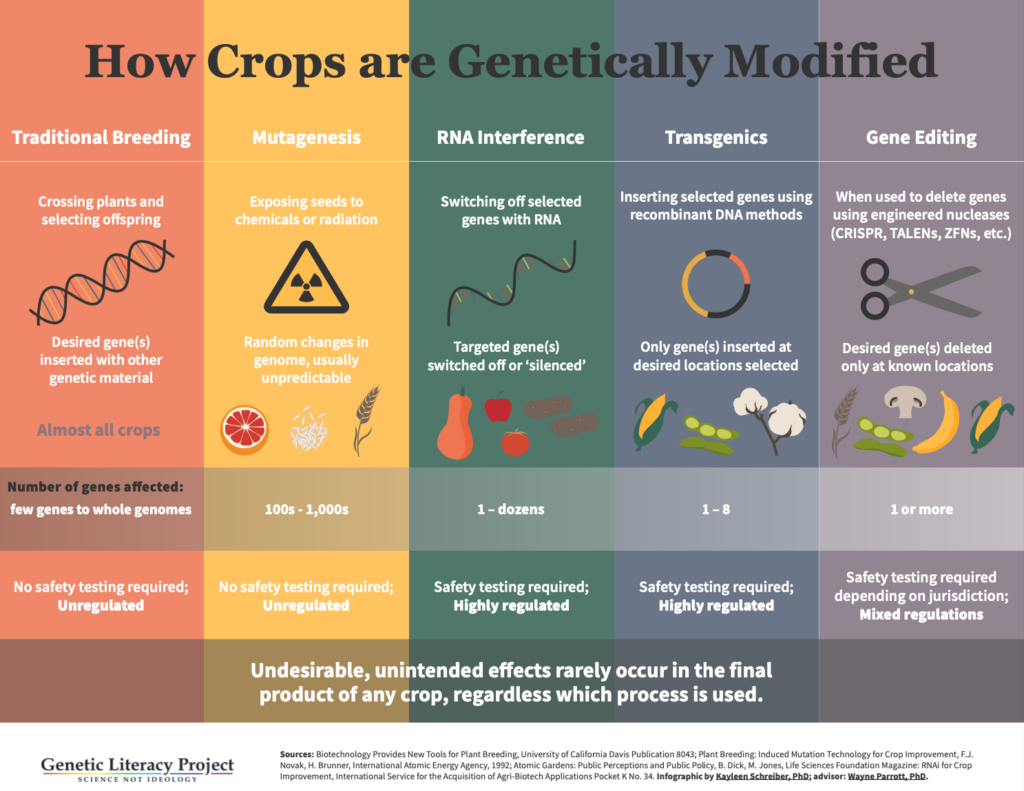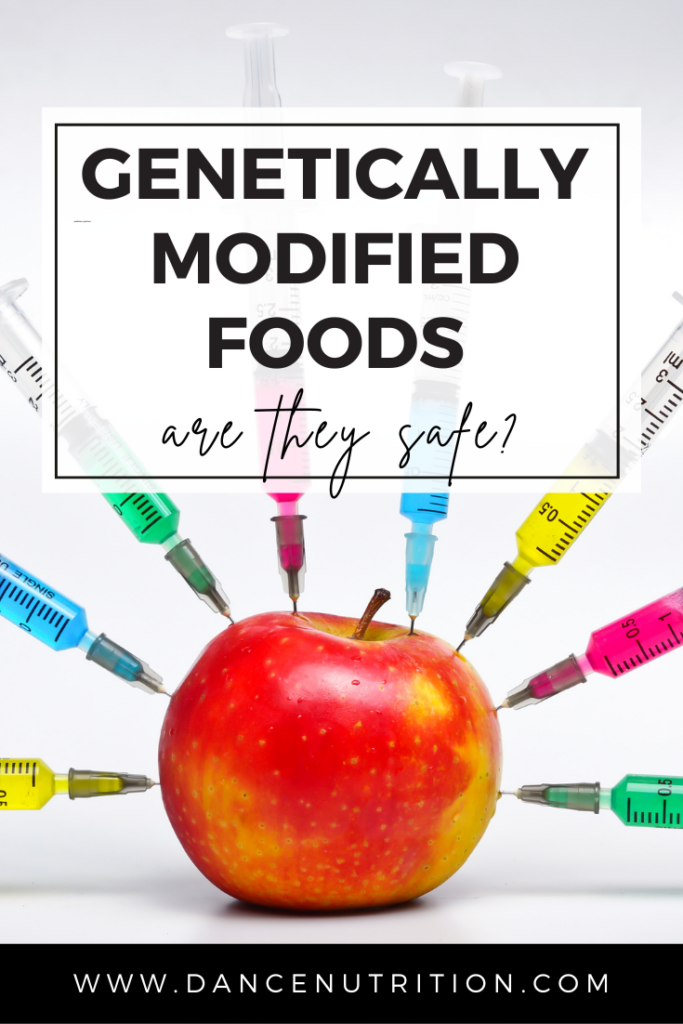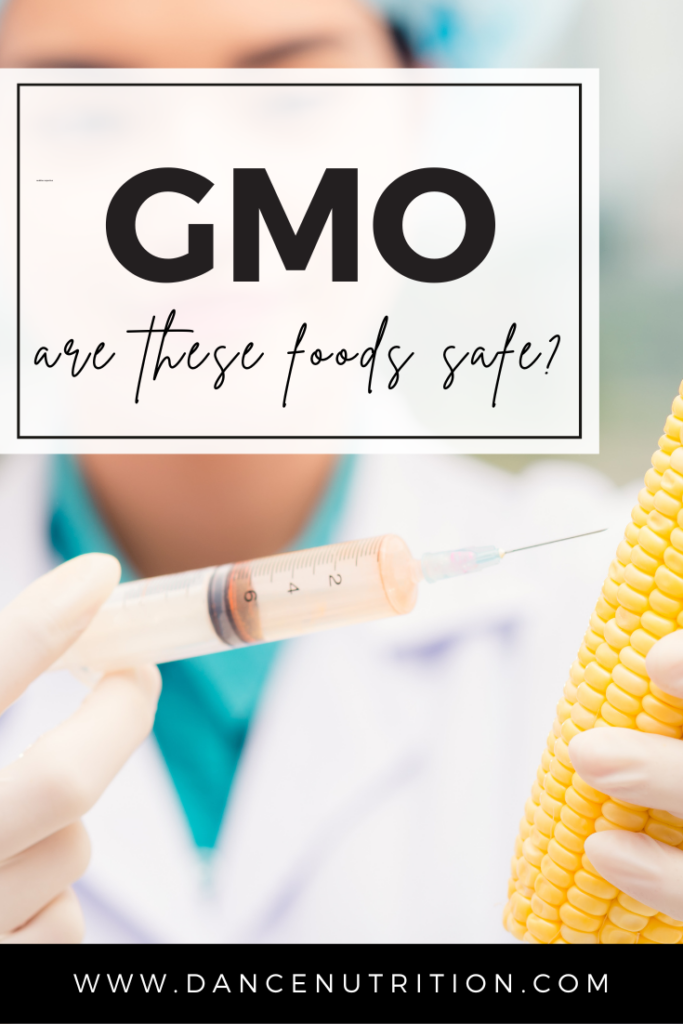If you’ve ever noticed a “Non-GMO” label on a snack bag, you’ve probably wondered what it means. For dancers, who often feel pressure to eat as “clean” as possible, these labels can spark a lot of confusion and sometimes unnecessary stress. Since many packaged foods contain at least one genetically modified ingredient, let’s take a closer look at what GMOs are and what they really mean for your health and performance (spoiler: get ready to feel way less stressed).
What are GMOs?
GMOs, or “Genetically Modified Organisms,” are plants or animals whose DNA has been altered to give them certain traits. This could mean making crops more resistant to pests, able to grow in harsher climates, or even taste better. While this might sound new, humans have been modifying crops in some form for thousands of years— traditional breeding techniques also change genetics, even in foods that carry “non-GMO” or “organic” labels.
In the U.S., only a few crops are grown as GMOs, but they’re common in our food supply. Examples include:
- Corn (used in flour, starch, syrup, meal, and animal feed)
- Soybeans (and products like soy oil, soy milk, and soy lecithin)
- Apples
- Farm-raised salmon
- Beet sugar (common on labels as “pure cane sugar”).
- Vegetable oil, canola oil, cottonseed oil, soybean oil, and corn oil.
There are several different techniques for genetic modification, with transgenics (below, in blue) being a highly regulated technique that is responsible for most of the GMOs in today’s food supply. But it’s important to understand that while all transgenic crops are considered genetically modified or “GMO,” not all genetically modified foods are considered transgenic. Here’s where confusion sets in: engineering techniques like traditional breeding (depicted below in red) are used in almost all crops (even those labeled as “non-GMO”). Though largely unregulated, traditional breeding is still considered safe— it’s just misleading because even organic foods can be genetically modified in this way . Here’s an article that describes more about the process of genetic engineering, along with the image above that depicts the various ways in which crops are modified.

Are GMOs Safe?
This is one of the biggest questions dancers ask— and the short answer is yes. Extensive testing shows that GMO foods are just as safe to eat as conventional foods. As of 2017, more than 280 technical and scientific institutions support the safe use of genetically modified crops with the majority of these institutions located in Europe, the UK, and the United States. The consensus? “GM crops have no more risk than those that have been developed by conventional breeding techniques.”
Before reaching the market, GMOs undergo years of testing, looking at potential allergens, digestibility, and environmental effects. On average, this process takes over 16 years. The FDA tests GMOs for their safety to eat, the USDA tests GMOs for their safety to grow, and the EPA tests GMOs for their environmental impact.
Why Farmers Use GMOs
Farmers often choose GMO crops because they can produce more food using fewer resources, such as land, water, and pesticides. This efficiency can help keep costs down and increase food availability, especially in the production of key commodity crops like corn, soy, cotton, and canola. The most notable benefit is the impact of genetically modified organisms on food insecurity— a benefit of making food more accessible. To learn more about the environmental benefits of GMO crops, click here.
What about GMO labels?
Since 2022, foods in the U.S. that contain certain GMO ingredients must display a “bioengineered” label. You’ll also see voluntary “Non-GMO” labels, often used as a marketing choice to give foods a competitive edge. While some shoppers perceive non-GMO foods as healthier, research doesn’t show meaningful nutritional differences.
It’s also worth noting some genetic engineering techniques (traditional breeding and mutagenesis) are, from a labeling perspective, not considered “GMOs.” As mentioned earlier, foods that include ingredients that have been modified using techniques like traditional breeding and mutagenesis are not as regulated and even crops certified as “organic” can use them. The bottom line? There isn’t much of a difference between foods that contain genetically modified ingredients and those that don’t. Financially, it’s not worth obsessing over this label.
Why Some Countries Limit GMOs
Some countries (ie, Europe) restrict the cultivation of GMO crops, often due to lobbying efforts, pressure from activists, and the need to maintain a “clean” food image. However, many of these same countries still import GMO products, especially for animal feed. This shows that GMOs are widely used in the global food supply, even in regions where they aren’t grown domestically. Here’s a great article to learn more about why GMO production is limited in some nations.
GMOs In Food: What Dancers Need To Know
For dancers, the most important takeaway is this: whether a food contains GMO ingredients or not, it can still be a nutritious and performance-supportive choice. Research consistently shows no higher health risk from GMOs compared to conventional foods. The World Health Organization also concludes that no negative health implications have resulted from the consumption of GMOs in the countries where they have been approved.
At the end of the day, what matters most is that you’re eating enough to fuel your dancing. GMOs are one piece of our complex food system, not something to fear.
Related reads:




